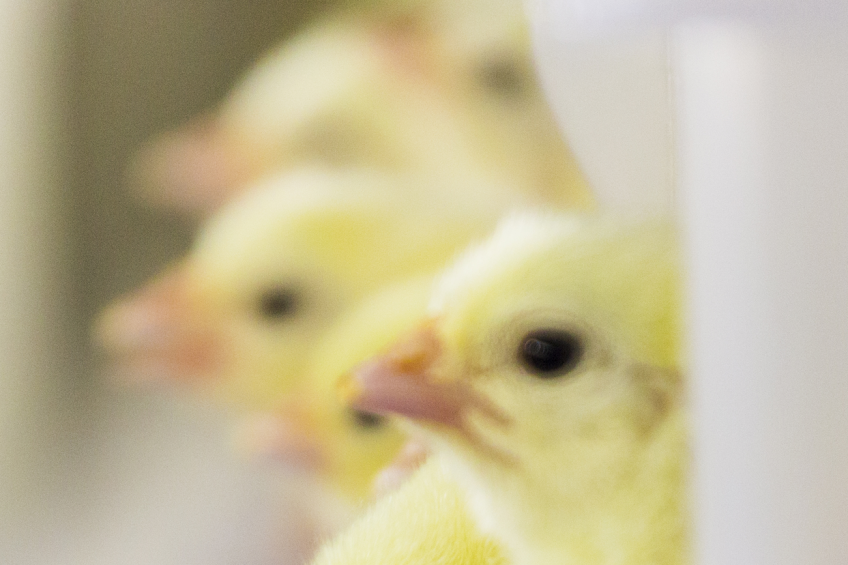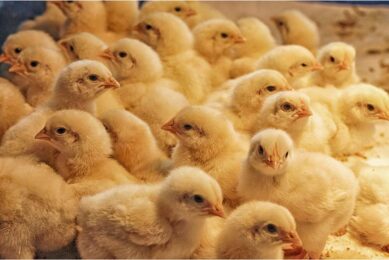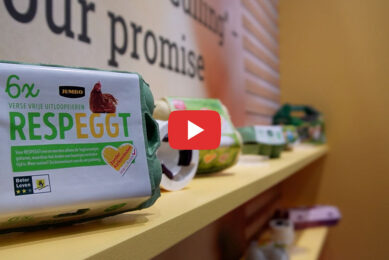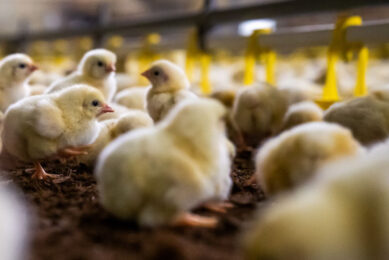DOCs handled with care

In principle hatching an egg is not that difficult. Just adding some heat for approximately 21 days will result in a chick. Even an animal is able to perform the procedure. However, optimising the hatching process for the best day old chicks demands innovative thoughts and above all – care from hatch to arrival on farm.
“When one looks at the processes in a hatchery, there are a lot of parameters which can be adjusted within the existing processes to improve the outcome. That is where in general the most efforts are put into. In doing so, one is likely to forget having a more holistic approach and seeing what is suboptimal in the first place. That is just what we did, putting the needs of the chick central,” says Erik Helmink, marketing director of Hatchtech. Together with two Dutch hatcheries, Probroed & Sloot and Lagerweij the company developed and tested the HatchCare hatcher system. The differences with normal hatchers are immediately visible. The transparent doors give insight into a process which cannot be witnessed in other hatchers. The chicks hatch in full light and have immediate access to feed and water. “Even for the most experienced hatchery personnel it is almost an emotional event witnessing the moment of hatch. And it is beautiful to show consumers as well,” says Edwin Paardekooper of Probroed & Sloot hatchery.
Fulfilling the chicks needs from the moment of hatching
In conventional hatchery practice it can take up to anywhere from 48 to 72 hours before a chick gets access to feed and water at arrival on farm. There is the hatch window to take in account with the first chicks hatching 30 hours before pull as well as handling and transportation time. “Streamlining these steps can lead to some time gains and should be done when it comes to handling and transportation. However, reducing the hatch window by increasing temperature or increasing CO2 levels in the hatcher will have adverse effects on chick quality,” states Wim van de Vegte, CEO of Lagerweij hatchery.
In the HatchCare system the chicks have more space, allowing better airflow around the eggs. With maximum 55% humidity and 1500 PPM CO2 concentration the conditions are far more favourable for the chick than in normal hatchers. “Cooking the chicks out of the egg isn’t an option when you want to put the chicks’ needs at centre stage,” Helminks grins. He continues: “In the HatchCare design the chicks hatch in light and are able to find their way to the specially developed starter feed in the specially designed crates and to the water at the sides of the hatcher. As a consequence all stress regarding the hatch window is out of the proverbial window. It doesn’t really matter how long the chick is in the tray, because all it’s needs are fulfilled.”
Access to water in the hatcher took some dramatic design changes, but prevents dehydration of the chicks.
Getting heavier healthier chicks
As a consequence, the uniformity of the chicks is better, the body mass is multiple grammes higher and the residual yolk uptake is bigger. Helmink: “Many think that the yolk sack enables the chick to survive the time from hatch to farm. In a way that is true, but when giving the chicks feed for maintenance the yolk can be used for firing up the immune system. We see better development of the small intestine, healthier, longer and heavier chicks with a more active and bigger bursa. The effects on day ten are even more significant.”
Chicks eating even before they are pulled from the hatcher, a beautiful sight.
Holistic approach to the hatchery process
Getting chicks as soon as possible on feed and water is a no-brainer, even if the actual implementation of the feed and water access in a hatcher asks for radical design changes. The HatchCare hatcher is bigger and is equipped with light and water. Feed is distributed in little feed trays in the hatching crate before the eggs are transferred from the setter to the hatching trays. “We took a holistic approach to improve hatchery processes,” Helmink explains. Instead of placing the 18 days incubated eggs flat in a hatching crate, they are placed point down in a rack suspended above the crate. When the chicks hatch, they drop down into the crate and are separated from the eggshell debris, non hatched eggs stay in the rack. Van de Vegte explains: “This really changes our process. After pulling the crates with racks on top from the hatcher the computer counts the unhatched eggs so we know how many chicks are in the crate. Faulty chicks are picked out of the crate and substituted by a healthy one.” At Lagerweij hatchery the separator which turns over the crates with chicks and eggshells for normal operation is shut down when the Hatchcare chicks are pulled, as is the chick counter. “The chicks stay in the crates in which they hatch until they arrive on farm, with no stress from wild rides over conveyors and no cross contamination risks in the hatchery.”
Getting the best possible chick to the farm
Transportation to the farm is done in the hatching crates. By doing so even during transportation the chicks have access to the feed. There is even the possibility to equip trucks with the same water and light system that is in the hatchers, making long haul transportation as comfortable as possible. Edwin Paardekooper of Probroed & Sloot hatchery says, “Getting the best possible chick to the farm, that is our goal. From our field experiences so far we see nice results in antibiotic use reduction and overall performance. The Hatchcare chick is more resilient to stressors. It will enable the farmer to grow them fast, that said, the risk of spinning out is higher with such management style.”
Probroed & Sloot and Lagerweij have a capacity of respectively 750 thousand and 850 thousand Hatchcare chicks a week. “At first we only used part of that capacity. We chose to deliver chicks (regular and out of the Hatchcare system) to farms with 2 or more identical houses and which agreed to give us feedback on the chicks delivered,” says Paardekooper. The hatcheries are now in the process to up output. Paardekooper adds, “Our clients are demanding this superior chick, especially the ones which have experienced them. They actively ask for the product and won’t take ‘no’ for an answer. That is a real positive sign I reckon.”













